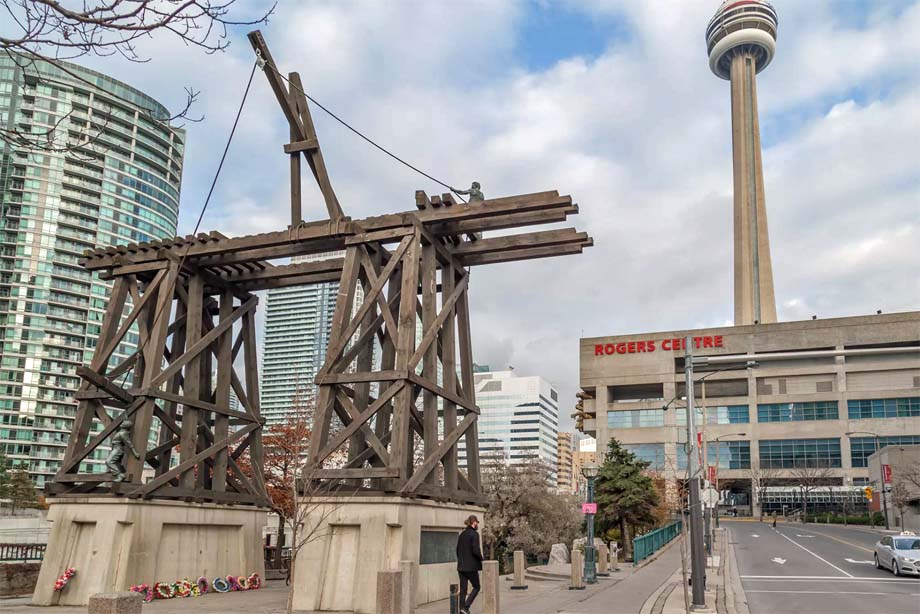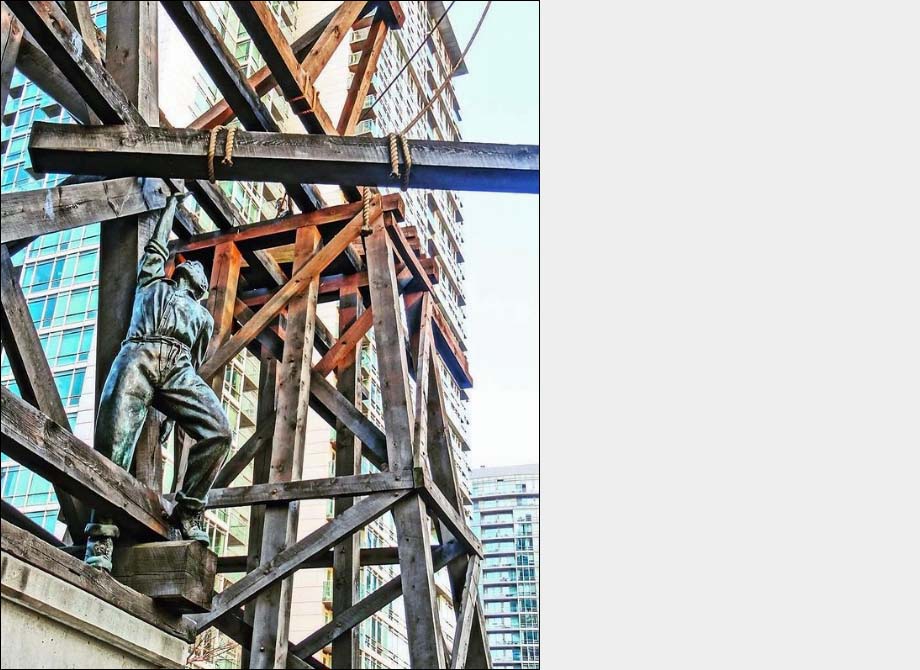
Toronto Ontario - In 1989, the Chinese Railway Workers Memorial was unveiled in Toronto, designed
by Eldon Garnet, serving as a solemn reminder of their sacrifice of thousands of Chinese labourers who toiled to build
the Canadian Pacific Railway (CPR).
From the treacherous heights to the harsh landscapes and climates, these workers faced unimaginable challenges to
connect the nation's coasts.

During the construction of the CPR from 1881 to 1885, over 17,000 Chinese immigrants were recruited for the most
dangerous tasks, including dynamiting rock faces, carving tunnels through mountains, and working at great heights on
shoddy scaffolding.
The memorial was designed by Eldon Garnet and built in 1989 with figures cast by Francis LeBouthillier.
It commemorates Chinese workers who helped build the railroad across Canada.
Despite their vital contributions, many lost their lives, with estimates ranging from 600 to 4,000, often buried in
unmarked graves along the railway.
The completion of the CPR marked a turning point for Chinese immigration policy in Canada.
The Chinese head tax and later the Chinese Exclusion Act created insurmountable barriers for Chinese immigrants,
tearing families apart and stifling immigration for decades.
It wasn't until 1947 that the Exclusion Act was repealed, followed by a formal apology from Prime Minister Stephen
Harper in 2006 for the injustices inflicted by these racist policies.
Led by Chinese Canadians and aimed to preserve their history and educate the public, the Foundation to Commemorate the
Chinese Railroad Workers in Canada was established in 1982 to honour the legacy of Chinese railway
workers.
Today, the memorial on Blue Jays Way in Downtown Toronto is a symbol of resilience and worker's rights.
Erin Horrocks-Pope.
 It should be pointed out that CPR construction workers comprised
people from all over the world, not solely Chinese workers. There is no number of how many Chinese died during
the dangerous work in the canyons of British Columbia as there appears to be no "official" record.
Onderdonk employed Chinese in construction purely for economic reasons and had no wish to see them killed.
The use of explosives, the dangers of construction, and a lack of safety precautions were rampant in the
1880s. Conditions were brutal, in addition to which, the Chinese were subject to racism which still exists
today in Canada, unfortunately.
It should be pointed out that CPR construction workers comprised
people from all over the world, not solely Chinese workers. There is no number of how many Chinese died during
the dangerous work in the canyons of British Columbia as there appears to be no "official" record.
Onderdonk employed Chinese in construction purely for economic reasons and had no wish to see them killed.
The use of explosives, the dangers of construction, and a lack of safety precautions were rampant in the
1880s. Conditions were brutal, in addition to which, the Chinese were subject to racism which still exists
today in Canada, unfortunately.
(likely no image with original article)
(usually because it's been seen before)
provisions in Section 29 of the Canadian
Copyright Modernization Act.

